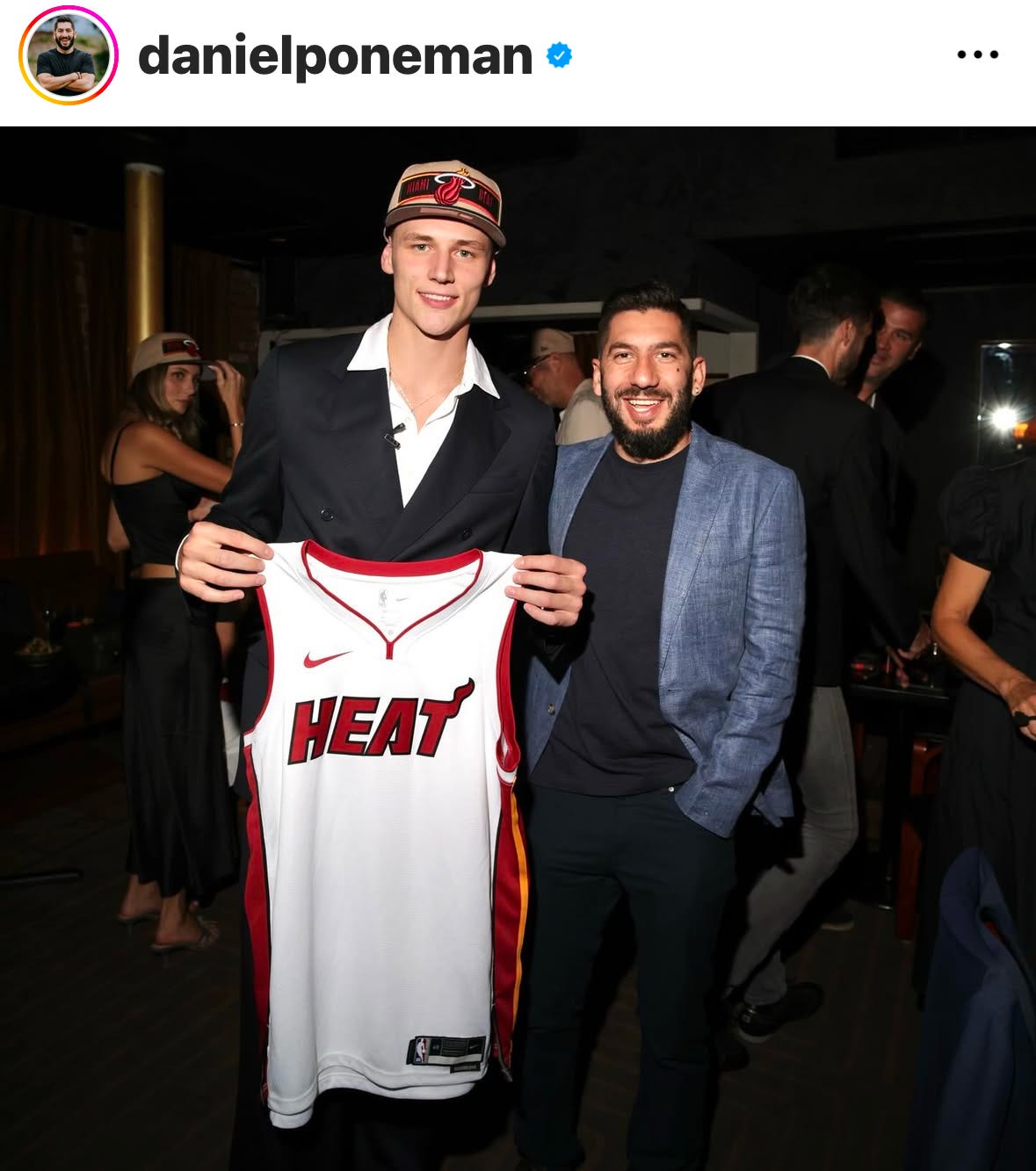
If memory serves, I met Dan Poneman sometime around 2017, attending an East Village screening of a documentary called Shot in the Dark which Poneman produced. The film followed players from Orr Academy on Chicago’s Westside — players chasing their hoop dreams despite the nightmares lurking on their street. Poneman has occupied a prominent place within The Windy City’s grassroots basketball scene for two decades. He is still running a free annual showcase to help local high school seniors generate college opportunities that debuted in 2009.
All that history helped Poneman become one of the leading agents who operates in today’s NIL landscape. He’s also become one of the most outspoken commentators on Twitter about how this space truly operates. “I was the only person at the advent of this that both had NBA experience and had really deep ties and lots of experience in college,” Poneman told me Wednesday. He’s worked with dozens of NBA players, at present representing Miami Heat rookie guard Pelle Larsson, in addition to an extensive NCAA client list.

“When you’re getting into the nuance of a good Conference USA team versus a bad American Conference team and the styles of play, it’s hard for a big NBA agent to understand that nuance there,” Poneman said. “Because it’s not their world and they don’t have time for it … and that’s my native language.”
Among the topics Poneman knows about as well as anyone: NIL negotiations, dollars and contracts that comprise the underbelly of these ongoing March Madness festivities and the NCAA transfer portal, as well as the numerous players who will be weighing whether to enter the NBA Draft this spring or remain a well-compensated collegiate athlete. As you’re watching games this weekend and the tourney rounds that follow, there’s quite frankly tons of money on the line for every player, coach and administrator involved.
NIL has largely been described by Poneman and other agents as a Wild West landscape, with unregulated spending across blue blood programs and handshake deals throughout the mid-major levels. The ACC, Big Ten, Big 12, Pac-12 and SEC, along with the NCAA, last week released a joint statement unveiling their idea of a Settlement Implementation Committee. That effort can be summed up simply: The NCAA and its power conferences are looking to effectively create a $20.5 million “revenue share” with student athletes and essentially institute a salary cap across all the schools’ sports.
With the proprietor of this Substack frequently telling me how much he struggles to make sense of this new college world, I saw Poneman as the ideal person to ask some pressing questions about this evolving marketplace, which — as we’ve been covering on The Stein Line recently — has already prompted several NBA front office executives, agents, and coaches to leave for college jobs in recent months. It was a fascinating dialogue.
(The following interview has been edited and condensed for clarity.)
What’s the general culture with this new NIL dynamic that NBA fans who don’t follow college basketball wouldn’t know, don’t know or ought to know?
Poneman: I think what people should know is players are getting paid a lot of money and it’s about time. Because coaches have been getting paid a lot of money for a long time. It’s giving guys reason to stay in college longer and develop more before making the jump [to the NBA]. Even though [Nevada head coach] Steve Alford just said it’s ridiculous how much guys are getting paid, if you look at the NBA, coaches are making about 5% of the players’ total salary on the team. Whereas in college, oftentimes the coaches’ salary is 50% of what the total players’ salaries are. So it’s still inequitable.
How has NIL changed the NCAA Tournament in your opinion?